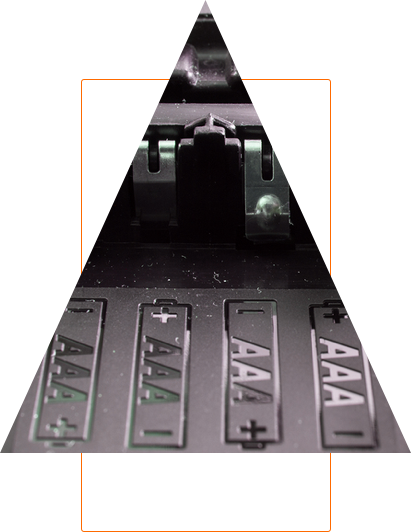Why Long Range Two Way Radios Don’t Cut It

*Updated June 7, 2019*
For the longest time, long-range two-way radios — more commonly known as walkie talkies — have been the go-to solution for companies looking to outfit their on-the-move employees with a unified way to stay connected. However, with the massive leaps forward in technology, this is no longer the best or most efficient way to conduct business. More intuitive ways of communicating have emerged, and the business world has begun to embrace them wholeheartedly, having finally realized they have other options on the table.
So many different ways to communicate, such as audio messaging apps (like our own), have risen to fill the void left by two-way radios. Some of these newer approaches have even devised a way to hold onto the inherent benefits of long-range walkie talkies and still cater to the needs of today’s business landscape. But some businesses are anxious to yield to change. They may be having trouble acknowledging that the technology they once relied so heavily on has become outdated, and because of that, their businesses may be suffering.
If this sounds like you, then it may be time for a reality check. The tools you use to communicate may be having a negative impact on your productivity, and you owe it to your team to explore how you can improve your efficiency and create a more collaborative environment for your workers. The first step, of course, is to let go of the misconception that two-way radios are still your best bet to keep your business going strong. Here are a few key reasons why it’s time to bid farewell to your beloved walkie talkies.
They hold you back from reaching your full potential
Your company is capable of great things, but with two-way radios at the center of it all, you’re forcing you and your team to work much harder just to keep up the market. Take control of your company’s destiny by introducing new, more efficient tools into the mix, allowing you to work smarter and not harder in serving your customers. Communication is absolutely an integral way to inject new life into your business, and today’s tools make it so much easier to elevate your game without breaking too much of a sweat. Frustration is exhausting. So find another way to accomplish the same goals, and you may find yourself exceeding expectations in no time.
 They’re bulky, cumbersome and frustrating
They’re bulky, cumbersome and frustrating
Today’s business landscape is ruled by convenience. Everything is online, in the cloud or — at the very least — made to fit in your pocket. Not two-way radios. These big boys are often heavy, bulky and a real pain to take with you when you’re on the move. It’s ironic that a tool designed to make conducting business easier actually impairs your mobility quite a bit. If simplicity is the solution, then you should have no room left for the frustrating scenario of having to lug walkie talkies around with you everywhere. Your team already has enough going on without having to carry a piece of hardware around with them everywhere.
They don’t leverage existing infrastructure
To overcome troubling times or provide your company with the boost it needs to break free from its current plateau, integration is absolutely critical. But don’t just look to integrate your systems with each other. You should also aim to find innovative ways to use what you and your team already has. When it comes to communication, the easiest solution is to find ways to use the technology you already have to propel your business forward. For instance, audio messaging apps are compatible with smartphones, giving your team the ability to connect on devices they already have on them at all times anyway. Two-way radios just add another item to your budget.
They’re expensive to both replace and maintain
Speaking of which, you’re paying in more ways than one if you’re still using two-way radios. Your company is struggling to make effective use of technology failing to conquer obsolescence, and your business is forced to foot the bill for a losing battle. Unlike more modern solutions, two-way radios are extremely costly to purchase. Then, of course, there is the inevitable need for maintenance and, if all else fails, replacement. Over time, all this may add up to a decision that just doesn’t hold weight, especially not when you can avoid this expense entirely. Cost considerations are one easy way to demonstrate the futility in still using two-way radios.
They complicate how you manage your team
Life — and managing your team, naturally — would be so much easier if you had the right tools on hand at all times. Although even today’s alternatives to two-way radios may ultimately cost you a bit of money, the investment is well worth it because of how it streamlines your ability to connect with your team. Consolidated communication means that you will be able to reach any team member or group of team members without struggling to get your message across.
Check out a Free Guide to Better Team Communication
Using a two-way radio is the equivalent of shouting in an empty hall and hoping that someone at the other hand will hear you. There’s no way to know when or if you’ll ever receive an answer. How then do you think this affects your ability to hold your team together and keep them on task?
They’re a burden on effective customer service
Likewise, your team will find it hard to unite in the service of a single mission — delivering the best customer experience on the market — with two-way radios. Because the troubles behind the scenes always creep into the customer-facing side of things, you owe it to your customers to update your processes regularly and reevaluate if they’re accomplishing what you need them to. If not, it’s time for a change. If you don’t act swiftly, then your indecision will likely begin to be reflected in your bottom line before too long. This is easily preventable if you can learn to identify the warning signs. So there’s no excuse for letting your customer service suffer.
They make efficient communication more difficult
When you’re trying to reach your team, two-way radios may work some of the time. But too often, the signal is weak, the sound is garbled and other connection issues stand behind you and the job you and your team need to accomplish as soon as possible. If you cannot get your team working together as one with any kind of reliability, then you can expect this internal communication breakdown to cause problems all throughout your business. The entire point of investing in a communication tool, be it two-way radios or an audio messaging app, is knowing that you can count on it when you truly need it. If you can’t, it’s time to cut it loose.
 They’re not sophisticated enough for today’s market
They’re not sophisticated enough for today’s market
Make no mistake: your competition is working hard every day to develop new and better ways to run the business, attract (and retain) customers and finetune their products and services. If your team is still using two-way radios to communicate, you’re already at a tremendous disadvantage. Thanks to technology’s omnipresent role in every aspect of society, the next generation of business is upon us. And playing an impactful role in it requires that you take your toolkit up a notch. Two-way radios are the past. It’s time to join the future, and that means outfitting your team with some brand-new toys to play with.
They don’t propel your revenue into a growth mode
If your business is having a hard time growing past its current stage, then two-way radios may be part of the problem but not for the reason you may think. Of course, this outdated technology is a relic of the past, but more importantly, relying on it is symptomatic of your inability to put your company into a state of perpetual growth. Newer communication tech centers on finding ways for you to unlock your potential to generate revenue by saving you time and money as well as empowering your team to act on a moment’s notice. To grow more, you have to start by thinking bigger and better.
They’re not very scalable for expanding teams
For so many of the reasons we’ve already described, two-way radios just aren’t an efficient tool for your business any longer. They’re inefficient, costly and unreliable. And they hold you back from reaching your potential for profitability. One surprising way they do that is by limiting your business from expanding. Each time you bring on a new team member, the problems caused by two-way radios only become sharper and more pronounced. So your business needs a new and far more scalable way to communicate if you hope to break out of this troubling rut. Modern technology works just as well if you have a small team or a large one and helps to ease the transition between the two.
 The Next Stage
The Next Stage
Don’t view this transition from two-way radios into a more modern form of technology as a radical shift. Instead, consider it an update, a chance for your business to evolve into a better version of itself. Through this next stage of your company’s lifespan, you’ll unlock a smoother, more streamlined route to success and long-term profitability. After all, if your methodology is hurting your ability to deliver results, it is no longer worth preserving, and as a manager, part of your responsibility is to keep an eye out for such process improvements and implement them to ensure you remain steadily on your growth plan.
Whether you opt for an audio messaging app like Voxer or decide to go with another alternative communication system, the essential step forward is that you are beginning to move past the two-way radios that have thus far been a staple of your business infrastructure. If you don’t allow your business to grow and change with the times, you’re only setting it up to fall apart down the line. The only question is when your creaky old processes will finally dry up and fail you unequivocally.
You shouldn’t wait until that happens or your company reaches some other crossroads to move on such enhancements. Being proactive and anticipating what your business needs now and in the future is imperative to remaining on top of your field and ahead of your competition. With any luck, this discussion can prove to be a pivotal step on your journey to reevaluating your communication.

